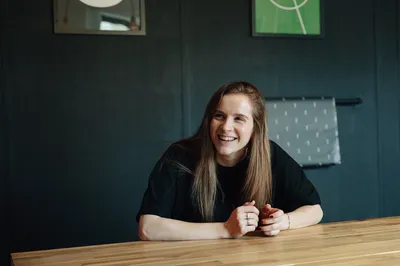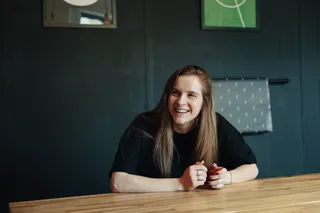What Qualifications do you need to be a Brand Designer?


According to a recent industry report, e-commerce will account for 20.4% of global retail sales by the end of 2022, up from only 10% five years ago. The e-commerce space is becoming more crowded, and consumers have more options than ever when it comes to parting with their hard-earned cash.
Studies show it takes about 50 milliseconds (0.05 seconds) for people to form an opinion about a website, and the message being put out there in that half a second is more important than ever.
Unfair as it may seem, having a great product alone is rarely enough in today’s market.
A brand’s design is its personality, and the story the brand is conveying to the world. Great design can take a brand from being one of many to being its own unique, memorable entity.
With so many companies now competing, an effective branding campaign is often one of the most important parts of creating a successful business, and many branding agencies are seeing the value of adding designers to their teams.
A career in brand design is a great choice for anyone with strong creative skills and a mind for strategy, and there are plenty of ways to launch a career in this interesting and lucrative field.
First impressions count, and the visual representation of a brand is going to be the first thing most customers see.
Brands designers are responsible for designing (or redesigning) an identity for a product, company, or service. It’s all about creating a story that cuts through the noise with the correct visual impact.
A good brand designer will ensure that every aspect of a company’s branding—from its social media channels and visual identity to each page of its website—is consistent and coherent across all platforms. Consistency is key in branding, as it helps build trust and confidence among potential customers.
Successful branding design should help an audience immediately recognise a company, its products, and its content. The brand designer is essentially there to breathe life into a brand and give it a tangible identity.
Day-to-day tasks can include:
Logo creation: A company's logo is often the most recognizable and important part of its public image, and it’s crucial that the logo is immediately recognizable. Logo design is often one of a brand designer's first and arguably most important tasks.
Creating other visual identities: Aside from the logo, brand designers are often responsible for other visuals that businesses may use. Everything linked to the company will need to be designed with the client brief, and approved style in mind. This can include fonts, colours, print media, packaging, online campaign imagery, social media aesthetic, and more.
Design of websites and applications: Almost all companies will have a website and/or app to sell their products and promote their business. A web developer will create the structure and functionality, but the design of these platforms is another crucial avenue in which a brand can promote its image and values.
Development of innovative and insightful branding strategy ideas that will engage the product’s target audience.
Client and target audience research: Learning how to best use design to get the desired results for the brand.
Overseeing production while paying excellent attention to detail and to the client’s brand guidelines as described within the client brief.
Working in this field requires the ability to follow a client brief. The client typically provides a brief, which includes its objectives, and the brand designer oversees creating a public image and message based on this.
A solid understanding of the client’s goals and values is a must in successful brand design. The client brief should describe the brand’s overall persona, what the business needs help with, and the result they expect.
Being able to follow this brief is imperative to a successful end result. It ensures that important design questions are considered and discussed before the designer starts work and helps develop understanding and trust between the client and designer — a key aspect of any working relationship.
Every project is different, but all the best briefs will include a project description, project scope, details of services required, objectives, target audience, project style examples, and a budget.
Visit How to Create a Killer Web Design Brief to create your own.

Jo in the MadeByShape studio
Branding design brings together art and technology, and anyone wanting to start a role in this industry needs to have mastered the technical skills needed to use a range of powerful design software applications. By and large, professional brand designers will make use of four primary programs:
Combining the technical skills needed to master these programmes, alongside a strong understanding of design principles will put any design student in good stead.
Other key skills for any budding brand designer include:
Fantastic communication and organisational skills
Great time management skills
An ability to work well with a team
A creative and keen eye for detail
An ability to deliver work in line with the brief, on time and within budget
Good design-orientated problem-solving skills
A strong ability to express thinking in words and images
Unlike many tech roles, a formal qualification isn’t required to get your foot in the door and succeed professionally in this industry. There isn’t a set path for becoming a successful brand designer, and passion, focus and ability are key.
Studying at university isn’t the right fit for everyone, and many people make their way doing (often free) online courses to see if they have a real aptitude for a career in design. Favourites include Skillshare, Coursera, Udemy and Canva.
These courses are a great way to learn the basics and build a solid knowledge base before committing to a design career.
While proficiency in the most commonly used graphic design software is a must down the line, when just starting out consider downloading a few free design applications before investing in more robust tools. Free tools like Design Wizard, Setka and Adobe Spark are all great options.
While some talented and studious individuals can become brand designers entirely via self-learning, the next step from here is most often a boot camp, where you can hone your skills and learn from the experts. Industry favourites are Shillington and General Assembly, both of which offer in-person, online-remote, part-time and full-time learning opportunities. The scope of accessibility offered by both makes it simple for anyone to learn, regardless of location.
Read Brand Designer Ella Dawson’s story to see how she came to be an integral part of our team here at MadeByShape.
Technically no, but while the popularity of online courses and boot camps has surged in recent years, studying for a degree or diploma is still the preferred route for some.
Graphic Design, Graphic Branding and Identity, and Visual Communication courses are all good options and are offered at universities and colleges across the country.
A degree is a big financial and time commitment, so it’s worth having a serious think if it’s the right choice for you. While it was once the industry standard, these days there is no guarantee it’ll improve your chances in the job market.
Andy Golpys, Co-Founder here at MadeByShape explains “When hiring we essentially look for people with an exceptional eye for detail, a great approach to strategy, and who can easily understand and follow a brief. If a candidate has the right skills, ambition, and attitude then there’s no reason they can’t be a great asset to the design team.”
Regardless of the route taken, the most important tool in any designer’s kit when just starting out will be their portfolio.
When looking for a job, apprenticeship, work experience or even just trying to bag that freelance contract, an up-to-date portfolio is the best way to show your mouth-watering creative ideas and impressive design skills. A good portfolio is a window into your world and the perfect place to showcase your personality, talent, and breadth of work to any potential employer.
Visit our article Top Tips: Setting up your own Branding Portfolio Website to learn how to create yours with maximum impact in mind.
Now, we know a whole lot about brand design, but even we can’t answer this one.
As this is an industry with such a vast array of routes ‘in the door’, it can take anything from months to several years depending on the person, their natural abilities, and circumstances.
The quickest option would be a full-time, in-person boot camp, where you’ll undertake intense study and in theory graduate with everything, you’ll need to start your design career. But success in this area will depend largely on your experience before enrolling. If you haven’t picked up a pencil a day in your life and have no creative flair, then it’s going to be a harder slog than for someone who has spent years studying art in school or college and who has a real love of design.
Everyone is different, and your skills and career background will have an impact on how swiftly you can start, or transition into, a paid brand design role.
Your education and ability are paramount; you need to know how to work to a brief, use the appropriate software, and will of course need a talent for design if you want to build a long-term career in the field.
If you’ve got this far, you’re probably now asking yourself is branding a good career?
A career in the creative industry is only as good as your passion for doing it, and if you don’t have the drive to push yourself to the best of your abilities and produce some exceptional work that you can be proud of then it won’t be for you.
But, if you’re looking for a creative, outward-thinking profession that can be rewarding, fun, and lucrative it’s a great career choice.
Salaries are dependent on the sector you’ll be working in, your experience and the location. The average UK salary for a junior brand designer is around 28K, a middle-weight brand designer will take home around £36K, and a senior, lead designer can expect to earn over £55K a year.
When working in this field no two days are the same and most designers work on a multitude of projects throughout their career, allowing you to constantly flex your creative skills.
It’s a fast-growing industry where there is a real demand for people with talent. Job security, great career prospects and an attractive salary — what’s not to love?
All roles in the tech industry are becoming increasingly digital, meaning you can technically work from anywhere in the world. With in-demand skills, you can choose to work anywhere from a large, multinational organisation to a small local business, or you could freelance, picking your own clients and working to your own schedule.
These days a brand’s personality is more important than ever and can be the make-or-break point for a company. A career in brand design gives you the chance to be the brain behind the voice, where you’ll get to see the tangible results of your creative thinking and talent in the real world.
Hello, I'm Natasia, and I'm a content writer for Shape.